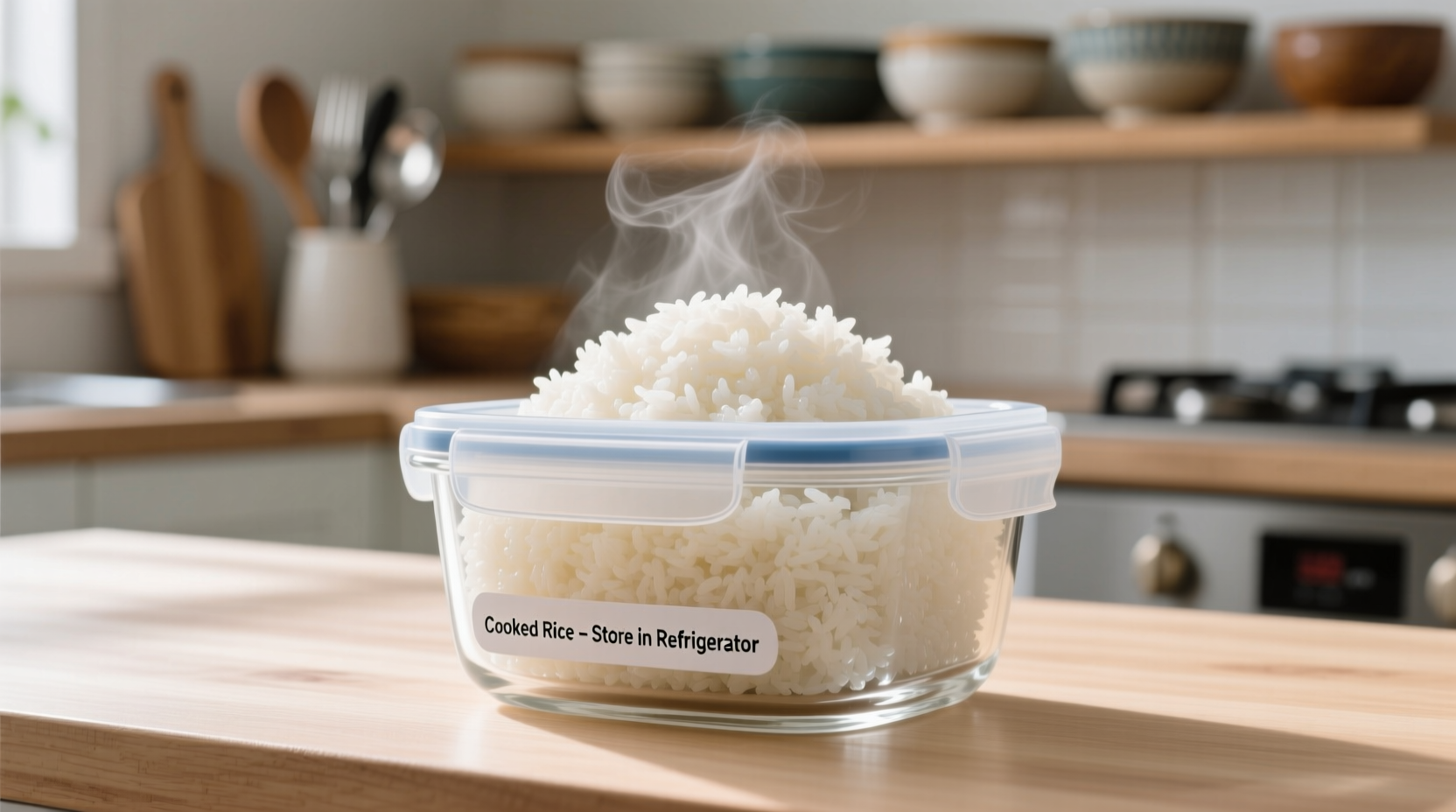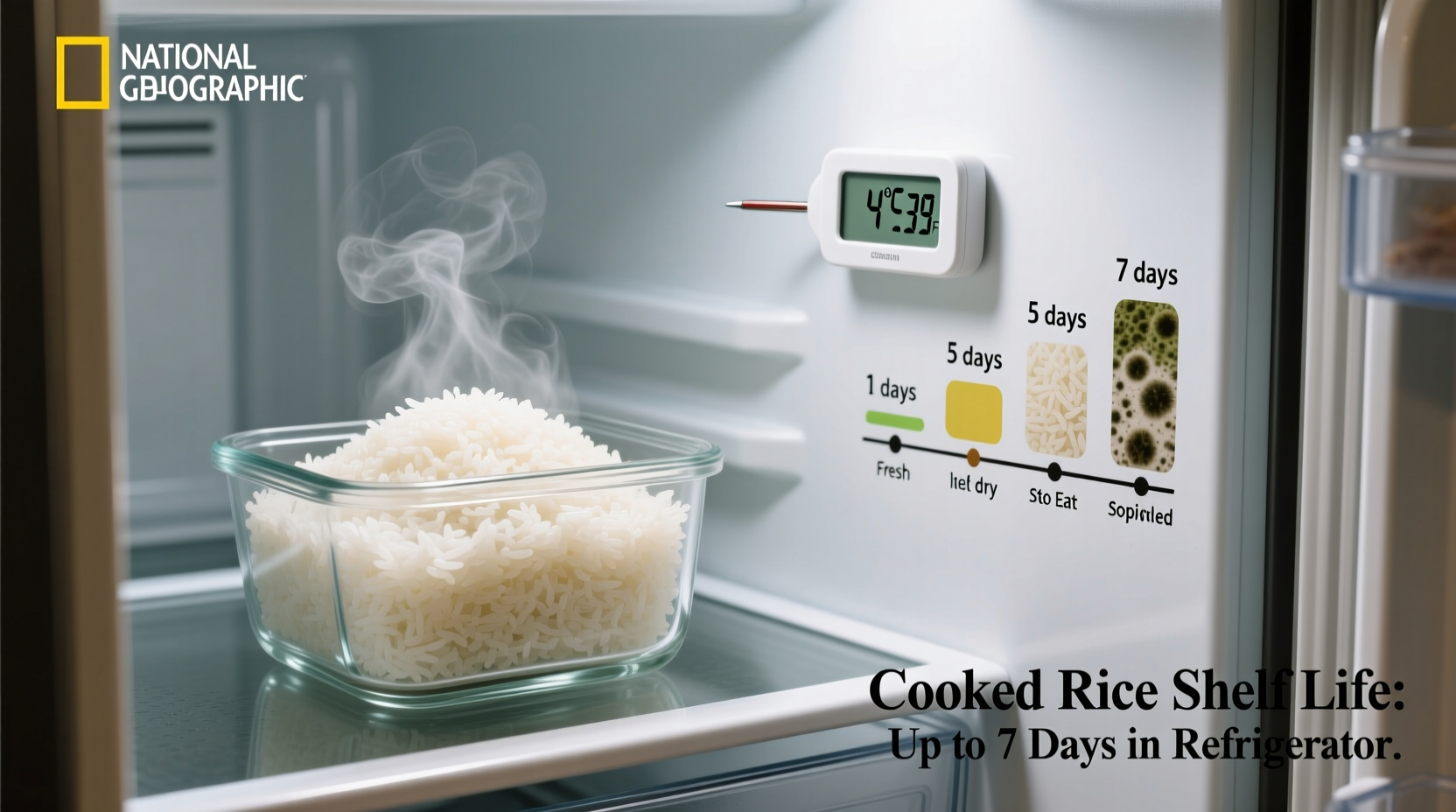Cooked rice stays safe in the refrigerator for 3-4 days when stored properly at or below 40°F (4°C). This timeframe applies to most common rice varieties including white, brown, and specialty rices. Proper cooling within 2 hours of cooking and airtight storage are critical for food safety.
Understanding how long cooked rice keeps in the refrigerator isn't just about preventing waste—it's essential food safety knowledge. Improperly stored rice can harbor Bacillus cereus, a bacteria that causes food poisoning with symptoms like vomiting and diarrhea. Unlike many foods, rice poses unique risks because this bacteria can survive cooking and multiply rapidly at room temperature.
Why Rice Requires Special Storage Attention
Rice naturally contains Bacillus cereus spores that survive the cooking process. When cooked rice sits at room temperature, these spores activate and multiply, potentially producing heat-stable toxins that refrigeration won't eliminate. The USDA Food Safety and Inspection Service confirms that cooked rice enters the temperature danger zone (40-140°F) faster than many foods, making prompt refrigeration critical.

Rice Type vs. Refrigeration Shelf Life
| Rice Type | Refrigerator Shelf Life | Special Considerations |
|---|---|---|
| White rice | 3-4 days | Most common variety; cools faster than brown rice |
| Brown rice | 3-4 days | Higher oil content may cause faster spoilage; check for rancidity |
| Jasmine/Basmati | 3-4 days | Aromatic varieties maintain fragrance best when fresh |
| Cooked rice with ingredients | 2-3 days | Mixed dishes (fried rice, rice salads) have shorter shelf life |
Critical Storage Timeline: What Happens Hour by Hour
Food safety experts from the FDA Food Code emphasize these critical time markers:
- 0-2 hours after cooking: Rice must cool to room temperature. Spread in shallow containers to accelerate cooling.
- 2 hours: Maximum safe time at room temperature before refrigeration. After this point, bacterial growth accelerates exponentially.
- 24 hours: Optimal freshness period. Rice maintains best texture and flavor.
- 72-96 hours: Final safe consumption window. Always inspect carefully before eating.
- 5+ days: High risk of spoilage. Discard immediately regardless of appearance.
Professional Storage Techniques That Extend Freshness
As a chef who's worked in both professional kitchens and home cooking education, I've found these methods consistently maximize rice shelf life:
Step 1: Rapid Cooling is Non-Negotiable
Divide large batches into shallow containers no deeper than 2 inches. This increases surface area exposure, cutting cooling time by 50% compared to storing in deep pots. Never put steaming hot rice directly in the refrigerator—that raises the internal temperature of your appliance.
Step 2: Choose the Right Container
Airtight glass or BPA-free plastic containers work best. The University of Minnesota Extension confirms that proper sealing prevents moisture loss and odor absorption. Leave ½ inch of headspace for expansion if freezing.
Step 3: Strategic Refrigerator Placement
Store rice on middle shelves where temperature is most consistent. Avoid the refrigerator door where temperature fluctuates with each opening. The USDA recommends keeping your refrigerator at 40°F or below—use a thermometer to verify.
Spoilage Detection: When to Definitely Discard Rice
Don't rely solely on the calendar—always inspect rice before consumption. Discard immediately if you notice:
- Visual changes: Discoloration, mold spots, or excessive dryness
- Smell test: Sour, rancid, or "off" odors (fresh rice should have a neutral or slightly sweet aroma)
- Texture issues: Sliminess or unusual stickiness beyond normal cooked rice texture
- Taste warning: If it tastes even slightly off, spit it out immediately—don't swallow
Advanced Storage Options for Meal Preppers
For those preparing rice in bulk:
- Freezing cooked rice: Portion into 1-cup servings in freezer bags (remove excess air). Stays safe for 6-8 months. Thaw in refrigerator overnight.
- Vacuum sealing: Extends refrigerator life by 1-2 days by removing oxygen that promotes bacterial growth.
- Reviving refrigerated rice: Sprinkle 1-2 tsp water per cup before reheating to restore moisture. Cover tightly during reheating.
Special Considerations for Different Rice Dishes
Not all rice dishes follow the standard 3-4 day rule. The FDA notes that mixed rice dishes have different safety profiles:
- Fried rice: Contains eggs and meat—maximum 2 days refrigeration
- Rice salads: Acidic dressings extend life slightly, but still limit to 3 days
- Creamy rice dishes: Risotto or rice pudding lasts only 2-3 days due to dairy content
- Rice with vegetables: Follow the shortest shelf life of any ingredient (usually 3 days)











 浙公网安备
33010002000092号
浙公网安备
33010002000092号 浙B2-20120091-4
浙B2-20120091-4